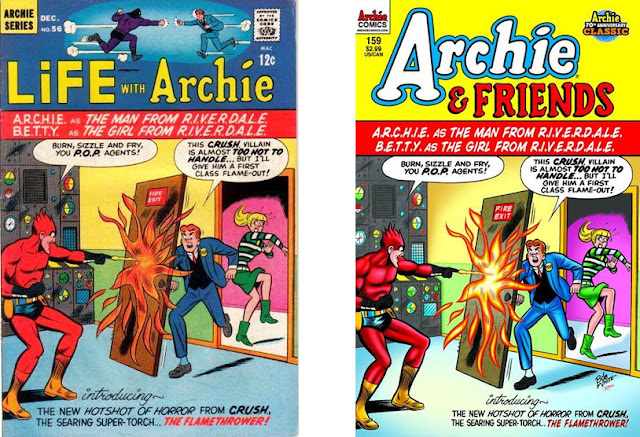In a surprise to everyone involved and the media, the cartoon My Little Pony: Friendship is Magic has gained a fanbase above and beyond the targeted demographic of little toy-purchasing girls. That fanbase is comprised of teenaged and adult males, affectionately dubbed by the media as "Bronies."
My Little Pony is a Hasbro toy line that began in 1983 and are exactly as they sound: colorful ponies designed to entice young girls. Gaining in popularity, two movies were released, Rescue from Midnight Castle in 1984 and Escape From Catrina in 1985, before spawning an animated series from 1986-87. In 1992, a follow-up series, My Little Pony Tales, was produced but only lasted the year. In 1993, the toy line ceased regular production, with intermittent releases over the next two years.
1997 saw the return of the toys with a new, sleeker look called Friendship Gardens (or Generation 2). This run proved unsuccessful in America and was discontinued in 1999, though it continued to run overseas until 2003's Generation 3 began. These ponies were said to reside in Ponyville and often came with magnets in their feet designed to activate elements on playsets. Recognizing a growing adult fanbase, Hasbro made collectible ponies available only at different events and targeted at these collectors. Between 2003 and 2009, Generation 3's ponies were featured in a series of direct-to-video movies
In 2009, Lauren Faust was approached to make a new show for Hasbro to premiere on their new network, The Hub. Faust set out to steer the series beyond it's "girly" roots and make it something more than a 22 minute commercial for their toys. The result was Generation 4, My Little Pony: Friendship is Magic.
 |
| Left to right from top: Pinkie Pie, Rainbow Dash, Rarity, Twilight Sparkle, Applejack, Fluttershy. |
The show's initial focus was on Twilight Sparkle, a magical unicorn who is the student of Princess Celestia and overly dedicated to her studies. Sensing danger on the horizon, Celestia sent Twilight from the royal city of Canterlot to Ponyville to learn about friendship and make new friends in order to harness the elements of friendship and save Equestria. Initially reluctant, Twilight, along with her assistant, a baby dragon named Spike, managed to make five close friends: Fluttershy, a timid Pegasus who is responsible for all of Ponyville's various animals and whose friendship element is kindness; Rarity, another magical, and highly fashionable, unicorn who runs a fashion boutique and represents the element of generosity; Applejack, a hardworking farm gal who harvests apples on her family farm, Sweet Apple Acres, and represents honesty; Rainbow Dash, a boastful Pegasus who works in Cloudsdale controlling Equestria's weather while aspiring to become one of the high-flying Wonderbolts, and represents loyalty; and Pinkie Pie, a hyperactive pony who loves to party and partake of sweets from her job at Sugar Cube Corner, and represents laughter.
Each episode of the first season had Twilight learning about friendship and writing a weekly report about it to Princess Celestia, to coincide with the moral eventually learned at the end. The second season expanded this concept during its third episode "Lesson Zero" to include reports from any of the "Mane 6" (as fans have dubbed the main pony cast) who learned anything at all about friendship. As a result, the second season focuses a lot less on the group dynamic of the 6 friends and more on individual character stories with lessons targeted towards them.
So, where do the Bronies come in? Faust managed to achieve her goal of making not just another toy tie-in cartoon and gave it an actual story and heart. With superb writing, well-developed characters and morals that aren't exactly forced into each story for the sake of being there, the show reached an unprecedented level of quality that managed to be noticed by a larger fanbase than anyone involved with the show ever expected. Not to be outdone, the series has also garnered loyalty from older female viewers dubbing themselves "Pegasisters." The show has also inspired countless of Youtube video remixes and parodies, fan art and internet memes (fanfiction and forums are pretty much standard and expected by this point).
Does it live up to the hype and attention it's gained? Doesn't hurt to give it a try, does it?
My Little Pony: Friendship is Magic, airs Saturday mornings at 10 & 10:30 Eastern on The Hub. Check local listings.
Does it live up to the hype and attention it's gained? Doesn't hurt to give it a try, does it?
My Little Pony: Friendship is Magic, airs Saturday mornings at 10 & 10:30 Eastern on The Hub. Check local listings.








